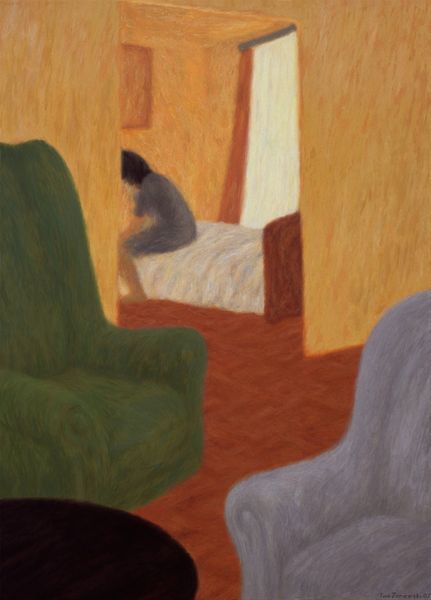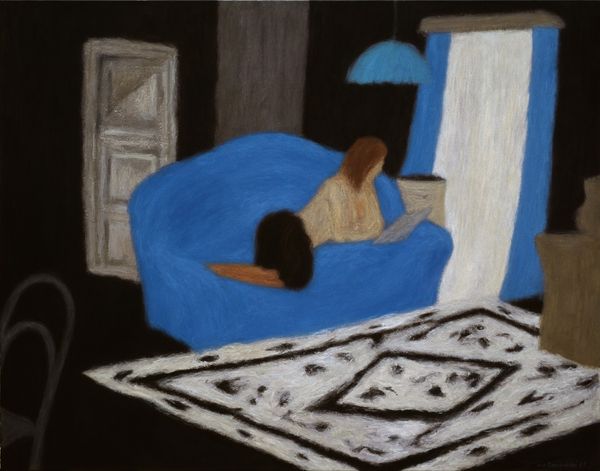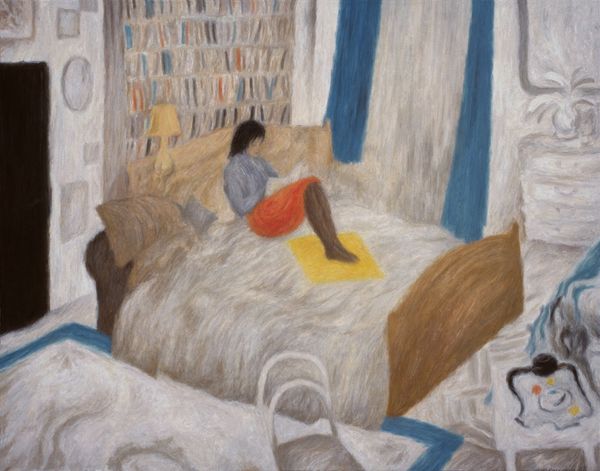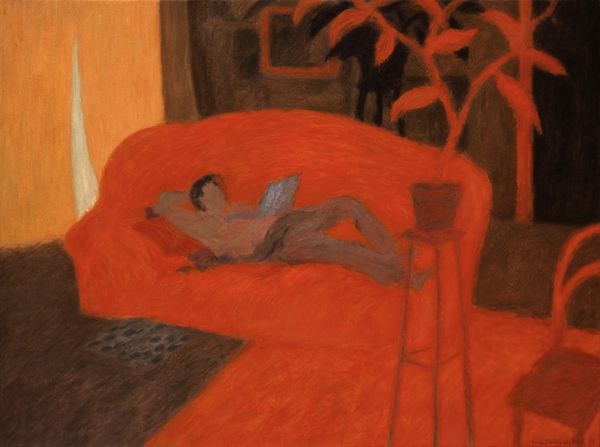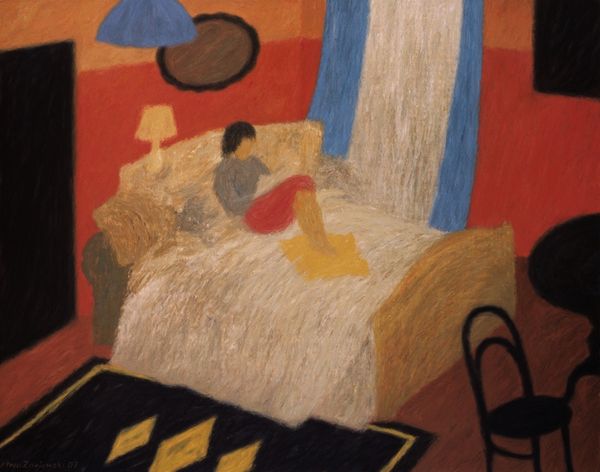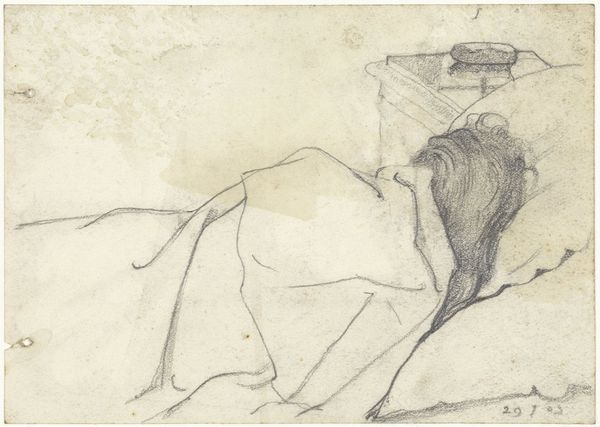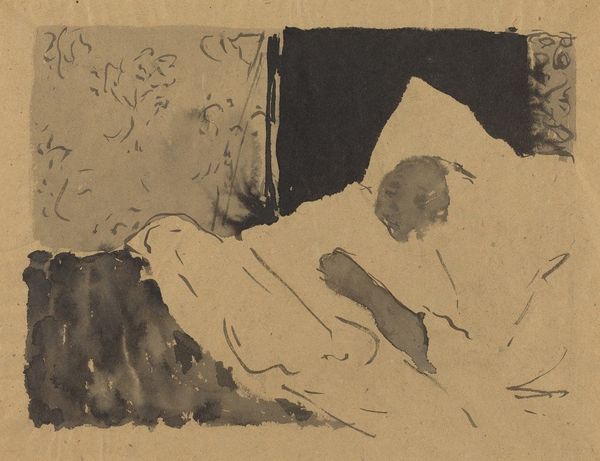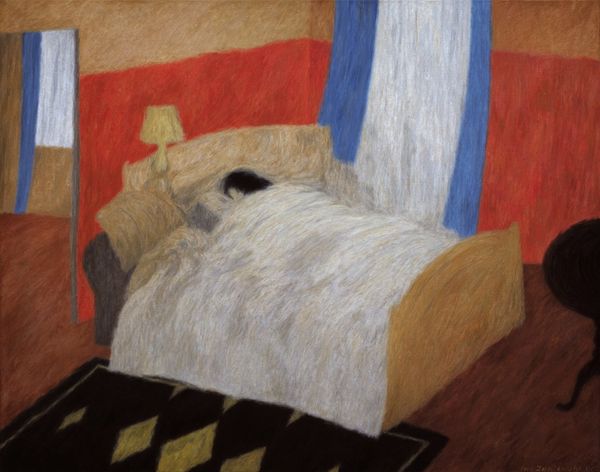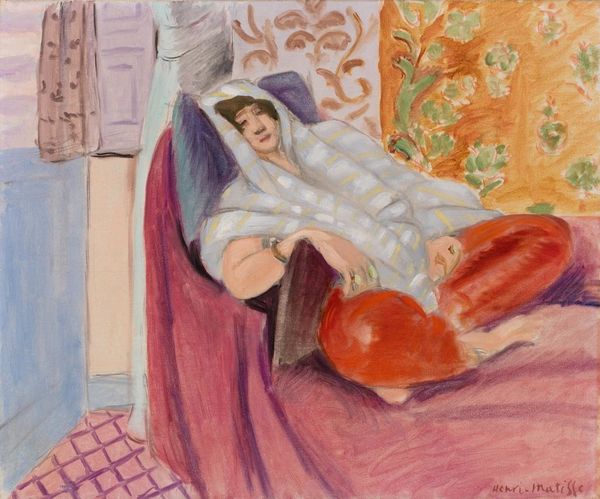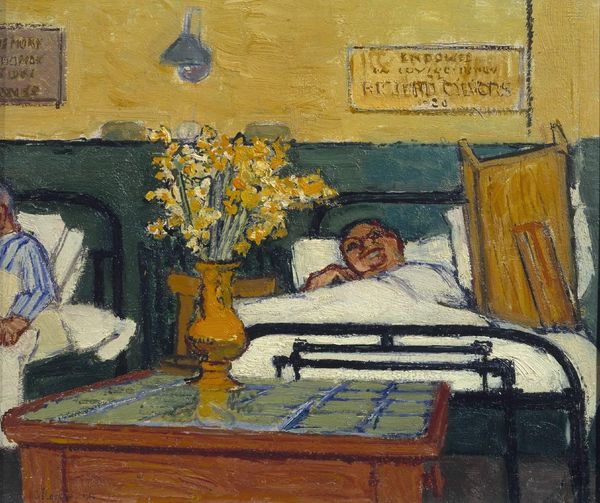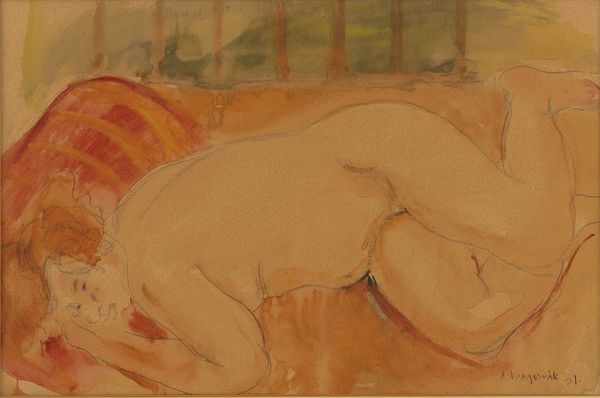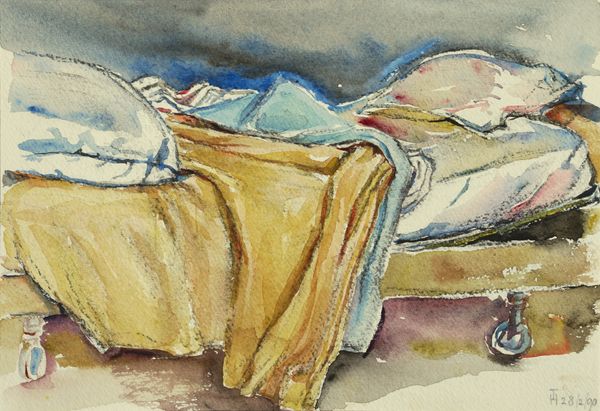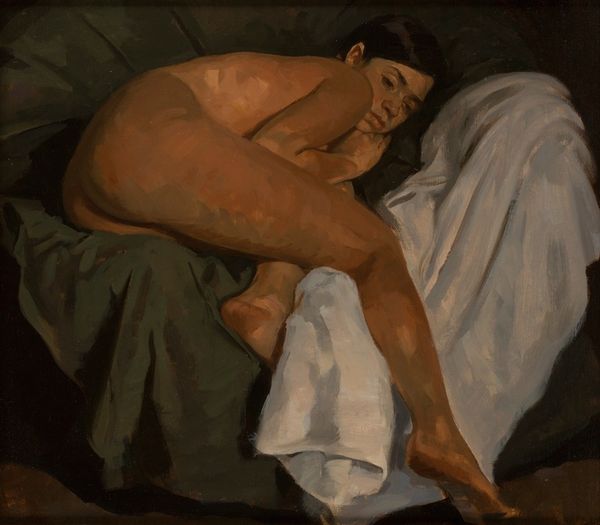
painting, gouache, paper, impasto, pastel
#
portrait
#
toned paper
#
painting
#
gouache
#
painted
#
figuration
#
possibly oil pastel
#
paper
#
abstract
#
oil painting
#
impasto
#
intimism
#
painting painterly
#
pastel
#
nude
Copyright: Public Domain: Artvee
Editor: Here we have “Au lit” or "In Bed," created around 1891 by Édouard Vuillard. It's gouache and pastel on paper, and it's making me think about stillness and intimacy, despite the somewhat fragmented, almost abstract quality of the composition. What stands out to you? Curator: I notice immediately the materiality, how Vuillard uses gouache and pastel to flatten the scene. He's not aiming for illusion, but rather drawing attention to the surface itself. The bedclothes are reduced to geometric shapes. Does this simplification perhaps challenge our traditional notions of what constitutes high art? Editor: Absolutely. It's not just a pretty picture, it's forcing us to consider the very stuff it's made of. How would that contrast with say, academic painting of the time? Curator: The artistic trend would emphasize realistic rendering. But Vuillard is clearly dismantling that tradition, focusing instead on the materials themselves and their application. Look at the way the "T" above the bed almost functions like another geometric form – is it merely decorative, or does its presence signify something deeper about the social context, perhaps alluding to themes of domesticity? Editor: I never thought of that! Thinking about it as another 'material' or 'signifier', rather than just something decorative... it feels almost radical in its simplicity. It does raise a question: how much were the materials themselves—pastel, gouache, paper—democratizing art making at this time? Were they more accessible than say, oils on canvas? Curator: Precisely! This accessibility connects the artwork to broader shifts in artistic production and consumption. Vuillard, by choosing these materials, implicitly engages with questions of labor, materiality, and the blurring lines between "high art" and craft. It forces a material dialogue beyond the art establishment of his period. Editor: So much to consider from what appears to be just a simple scene! I'll definitely be thinking about materiality and social context differently from now on. Thanks! Curator: My pleasure. Paying attention to materials, and how they engage and challenge cultural forces, offers another vantage point for understanding art and our world.
Comments
No comments
Be the first to comment and join the conversation on the ultimate creative platform.
